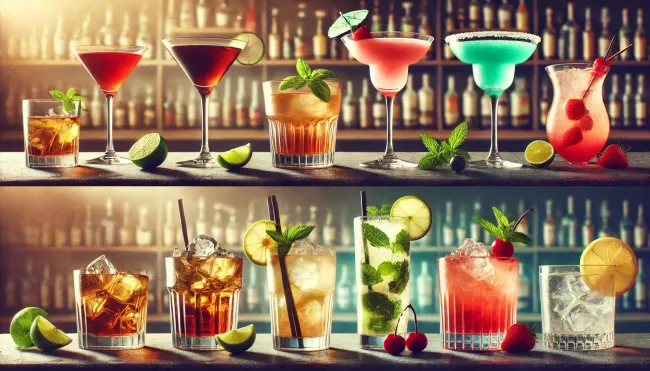

When it comes to cocktails, we often think of fun, flavor, and perhaps a bit of flair. But lurking in the history of mixology are ingredients so potent, so dangerous, they've been banned or regulated out of your local bar. Buckle up and grab a drink (a safe one, please) as we explore seven cocktail ingredients that could knock you out—literally!
1. Absinthe: The Green Fairy’s Wild Ride
Absinthe, the infamous "Green Fairy," has been the subject of countless legends, many involving hallucinations, madness, and even murder. This potent spirit, made from wormwood, fennel, and anise, was banned in many countries in the early 1900s after being linked to hallucinations and a case of absinthe-induced madness (or so they claimed). The truth? Absinthe's psychedelic reputation was largely exaggerated. The real culprit behind those wild stories was likely just plain old overconsumption of alcohol. The good news? Absinthe is back on the market in many places, minus the hysteria—though the high proof means it can still knock you on your derrière if you're not careful!

A vintage absinthe bottle with a green tint, featuring an ornate label. The bottle is surrounded by several glasses filled with glowing green absinthe. Image generated by Open-AI, August 27, 2024.
2. Moonshine: The Original Knockout Punch
If you've ever wondered why "moonshine" conjures images of backwoods distilleries and secret sips from mason jars, it's because this high-proof spirit has a storied history of being produced in the dark (literally and figuratively). Made from corn mash, moonshine is notorious for its high alcohol content and for occasionally being made with less-than-legal methods. In some infamous cases, moonshine was contaminated with methanol—a toxic form of alcohol that can cause blindness or even death. Today, regulated versions of moonshine are available, but the illicit stuff still circulates, keeping its dangerous legacy alive and well.
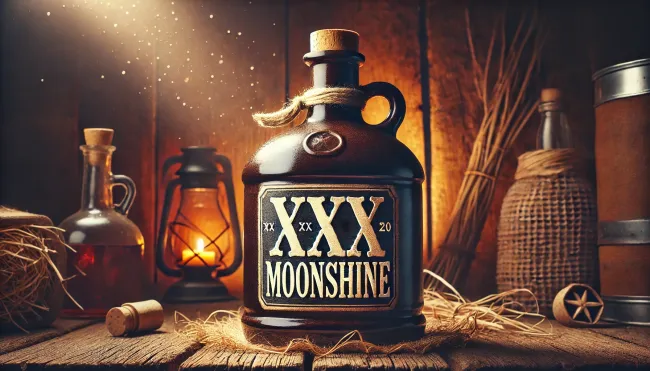
A classic moonshine jug labeled 'XXX' with a rustic background. The jug is made of dark brown ceramic with a cork stopper, featuring a prominent 'XXX'. Image generated by Open-AI, August 27, 2024.
3. Coca Wine: A Potent Mix
In the 19th century, people were mixing their alcohol with coca leaves to create coca wine, like the infamous Vin Mariani. This drink was all the rage among European elites and even American presidents, touted for its energizing effects. However, the combination proved to have significant side effects, leading to it being discontinued in most places. While some may look back with curiosity, coca wine is a reminder of how even well-intentioned concoctions can sometimes pack a more powerful punch than anticipated.
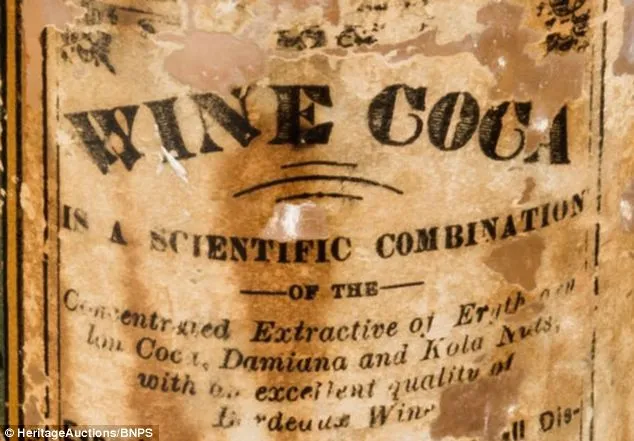
French Wine Coca, created by Dr. Pemberton, a Civil War veteran and pharmacist, was a blend of wine, alcohol, and cocaine, launched in the early 1880s. Courtesy of DailyMail.com, downloaded August 27, 2024.
4. Laudanum: The Victorian Cocktail’s Dirty Secret
Picture this: it’s the Victorian era, and you’re feeling a bit under the weather. What do you reach for? Laudanum, of course—a potent concoction of opium and alcohol! Used as a cure-all for ailments ranging from coughs to insomnia, laudanum was a staple in many a household medicine cabinet. The problem? It was highly potent and, if overused, could lead to serious health issues. Not exactly the kind of thing you want to be sipping in your afternoon tea. Laudanum’s risky nature eventually led to it being heavily regulated and then effectively banned. Today, we look back at laudanum with a shiver—what were they thinking?!

An old-fashioned laudanum bottle with a skull and crossbones symbol. The bottle is dark amber glass with a vintage label featuring ornate script. Image generated by Open-AI, August 27, 2024.
5. Jamaican Ginger: The Not-So-Spicy Truth
Jamaican Ginger, or “Jake,” was once a popular flavoring agent used in alcoholic concoctions during Prohibition. However, when alcohol was outlawed in the 1920s, bootleggers started using it to produce a cheap, high-proof liquor. To evade government testing, some producers added a chemical called tricresyl phosphate (TCP) to their brews, which turned out to be a potent neurotoxin. Thousands of people were left paralyzed by what became known as "Jake Leg." The moral of the story? Be careful what you put in your cocktails—sometimes, a little spice can go a long, dangerous way.
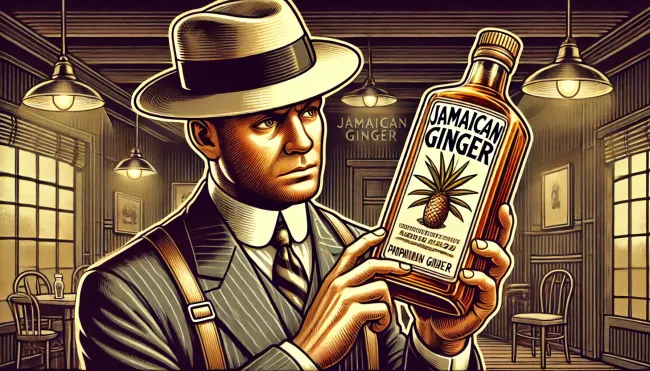
A prohibition-era illustration of a man holding a bottle labeled 'Jamaican Ginger' with a look of concern. The man is dressed in 1920s attire. Image generated by Open-AI, August 27, 2024.
6. Thujone: The Wormwood Worry
Thujone is the chemical compound found in wormwood, the key ingredient in absinthe, that was once blamed for all those alleged hallucinations. In high doses, thujone can indeed be toxic, leading to convulsions and other scary symptoms. However, the levels of thujone in absinthe and other spirits are far lower than what's required to cause such effects. Still, the thujone scare led to strict regulations on absinthe production for decades. Now, with those myths mostly debunked, thujone-containing absinthe is back in the game—just remember to enjoy responsibly!
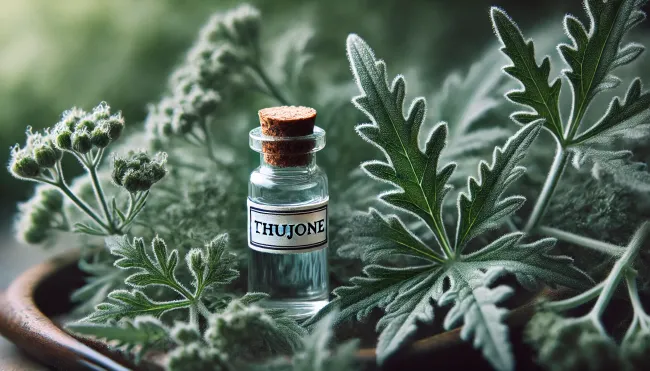
A close-up of wormwood leaves with a small vial labeled 'Thujone'. Image generated by Open-AI, August 27, 2024.
7. Bitter Almonds: A Cyanide Cocktail, Anyone?
Bitter almonds have a lovely flavor that’s reminiscent of cherries, which is why they’re often used in syrups and liqueurs. But here’s the kicker: they also contain cyanide, a deadly poison. Even a small amount of cyanide can be lethal, so consuming bitter almonds is a big no-no. Thankfully, most of the almond flavoring we use today comes from sweet almonds or synthetic versions that are cyanide-free. So, next time you’re enjoying an amaretto sour, take a moment to appreciate modern food safety standards—cheers to not being poisoned!
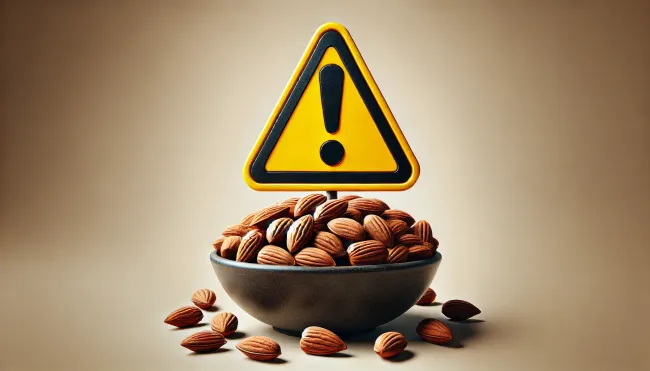
A bowl of bitter almonds with a caution symbol superimposed on it. The bowl is filled with bitter almonds, which have a slightly wrinkled, brown appearance. Image generated by Open-AI, August 27, 2024.
Conclusion: Sip Wisely!
While these ingredients might sound like something out of a cocktail-themed horror movie, they remind us of the importance of knowing what’s in our drinks. From absinthe’s hallucinogenic myth to the very real dangers of moonshine and beyond, the history of cocktails is as colorful as it is cautionary. So next time you're out for a drink, remember: it's not just about the buzz, but also about the knowledge. Raise your glass to safe, informed sipping!
Cheers!
Article Sources
Berridge, V., & Edwards, G. (1987). Opium and the People: Opiate Use in Nineteenth-Century England. Yale University Press.
Musto, D. F. (1999). The American Disease: Origins of Narcotic Control. Oxford University Press.
Dyer, C. (2003). "Jamaica Ginger Paralysis." In R. S. Porter & A. M. Stirling (Eds.), Clinical Toxicology. W. B. Saunders Company.
Barnes, J. (2006). Absinthe: History in a Bottle. Chronicle Books.
Lee, M. R. (2009). The Bitter Taste of Almonds: Revisiting the Cyanide Myth. Toxicological Sciences, 109(2), 289–290.
Brown, M. (2014). Moonshine: A Cultural History of America’s Infamous Liquor. St. Martin's Press.
Lanfray, D., & Poë, E. A. (2015). The Chemistry of Thujone: A Contentious History. Journal of the American Chemical Society, 137(16), 5000–5009.


